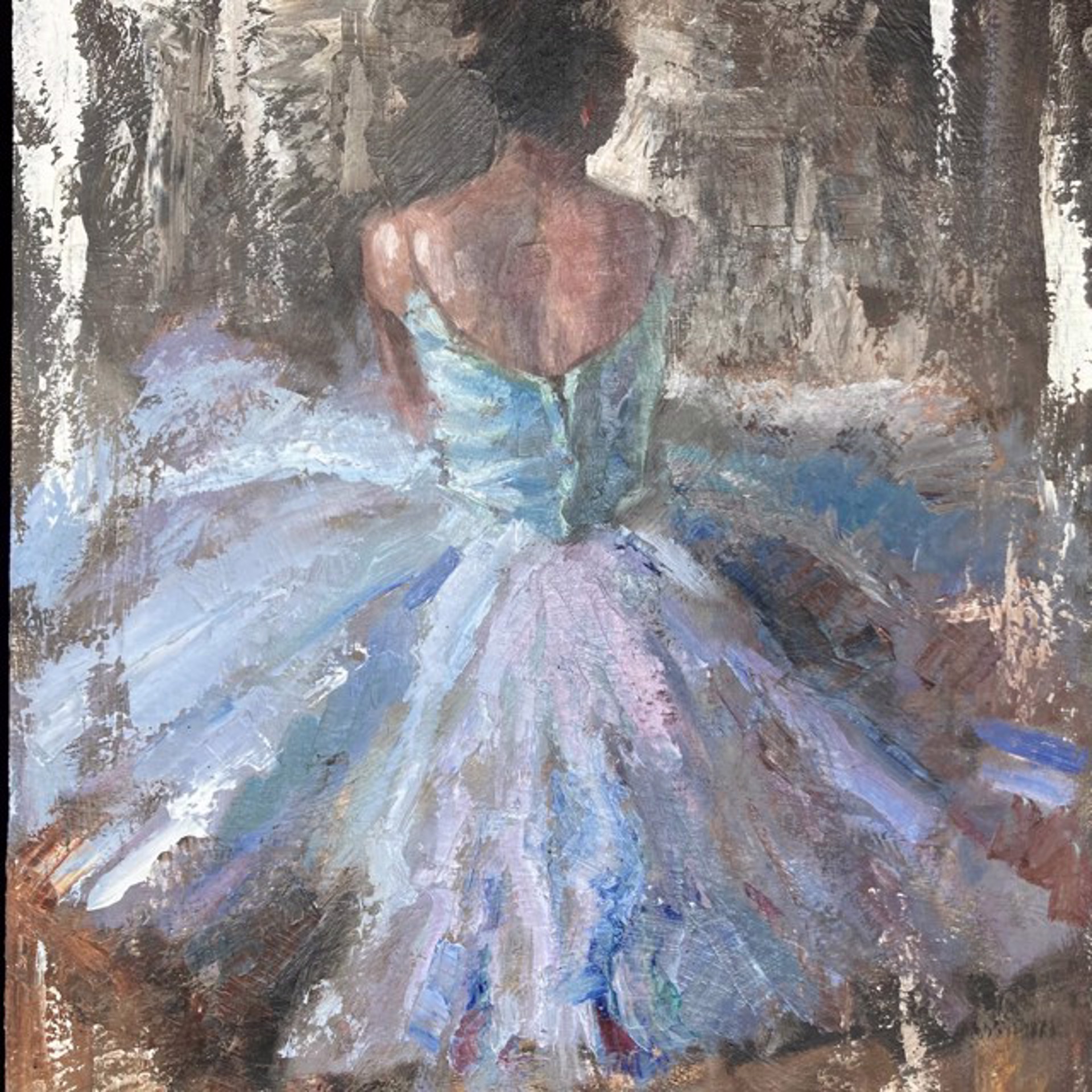Striking Landscape and Nature Oil Paintings for Sale
Striking Landscape and Nature Oil Paintings for Sale
Blog Article
Discovering All Concerning Oil Paints: An Overview to Recognizing Their Elegance and Value
Oil paintings have captivated target markets for centuries, supplying a glance into the artistic proficiency of different eras. Their abundant history is intertwined with innovative techniques and extensive emotional expression. Comprehending the materials and approaches behind these art work can improve gratitude. In addition, the marketplace for oil paintings presents opportunities for enthusiasts and capitalists alike. As one explores this fascinating globe, the concern occurs: what makes an oil painting absolutely useful?
The History of Oil Paint: A Journey With Time
Although oil paint has origins that date back to ancient times, it really flourished during the Renaissance, when artists uncovered its convenience and rich shade possibility. Early instances can be traced to the 7th century, with strategies progressing notably throughout societies. The medium came to be popular in Northern Europe in the 15th century, specifically with the jobs of artists like Jan van Eyck, that pioneered its use for detailed realism and vivid shades. This duration marked a departure from tempera paints, enabling better depth and texture. As oil paint spread, it affected countless artists, leading to masterpieces by distinguished figures such as Leonardo da Vinci and Rembrandt. The tool's heritage proceeds, forming the art globe well into contemporary times.
Understanding Oil Paints: Products and Techniques
As musicians check out the world of oil paints, they experience a varied array of materials and strategies that define this medium. The main elements of oil paint consist of pigments, which give shade, and drying oils, such as linseed, that bind the pigments and promote application. Numerous ingredients can modify the paint's texture and drying time, improving convenience. Techniques like glazing, where transparent layers are built up, and impasto, which involves using thick paint, enable for various visual effects. Furthermore, the usage of brushes, palette blades, and also fingers can develop distinct structures and coatings. Recognizing these techniques and materials enables artists to fully express their creativity and accomplish the desired impact in their artwork.
The Role of Shade in Oil Paints
Color plays a critical role in oil paints, affecting both visual allure and psychological resonance. Understanding shade theory essentials, consisting of the partnerships between hues, can boost an artist's ability to share mood and ambience. Furthermore, mastering shade mixing methods permits better depth and splendor in a paint's palette.

Shade Theory Basics
Understanding color concept is essential for artists dealing with oil paints, as it creates the structure for producing visually interesting and unified compositions. Shade theory encompasses the research of exactly how shades interact, the shade wheel, and the connections between primary, secondary, and tertiary shades. Artists utilize corresponding shades to improve contrasts and create focal factors, while similar colors promote unity and cohesiveness within an item. Furthermore, the ideas of cozy and awesome colors affect the understanding of deepness and space in a paint. Comprehending these concepts enables artists to adjust color properly, directing the visitor's eye and interacting their desired message. Mastery of shade theory eventually improves a musician's ability to communicate emotions and concepts via their work.
Psychological Impact of Color
The psychological influence of color in oil paints plays an essential role in just how viewers attach and perceive with art work. Colors evoke certain sensations and moods, influencing the visitor's mood. Warm shades like oranges and reds can develop a feeling of heat and power, while cool tones such as blues and greens typically evoke calmness or self-questioning. Artists tactically select shade combinations to boost narrative components, leading the target market's psychological trip. The saturation and comparison of shades even more magnify these results, attracting attention and creating emphasis. Eventually, the interaction of shades in oil paints not just improves their visual allure yet additionally functions as an effective tool for emotional expression, enhancing the audience's experience and interpretation.
Shade Combining Techniques
While numerous elements of oil paint add to the total make-up, understanding color mixing techniques is essential for achieving wanted impacts and deepness. Shade blending can be come close to via different techniques, including the additive and subtractive processes. Additive mixing involves incorporating shades of light, while subtractive mixing relies upon pigments, where colors blend to develop new tones. Musicians commonly utilize a limited palette to produce harmonious works, comprehending the relationships between main, additional, and tertiary colors. Strategies such as glazing and scumbling better boost deepness and luminosity. By masterfully blending colors, an artist can stimulate feelings, develop focal factors, and achieve a feeling of realism, inevitably raising the painting's visual and emotional influence.
Famous Oil Painters and Their Iconic Works

Famed for their mastery of color and technique, oil painters have created several of the most well known artworks in history. Distinguished musicians like Vincent van Gogh astounded target markets with his emotive brushwork in "Starry Night," while Claude Monet's "Perception, Daybreak" laid the foundation for Impressionism. Leonardo da Vinci's "Mona Lisa" remains an enduring symbol of artistic genius, showcasing his skill in capturing human expression. On the other hand, Rembrandt's "The Night Watch" highlights his cutting-edge use light and darkness. Other noteworthy figures include Pablo Picasso, who reinvented contemporary art with his strong testing in works like "Les Demoiselles d'Avignon," and Georgia O'Keeffe, whose dynamic depictions of landscapes and blossoms aided specify American innovation. Each musician's special style contributed significantly to the oil painting landscape.
How to Review the Top Quality of an Oil Painting
Assessing the quality of an oil paint involves a careful assessment of workmanship methods, as well as an evaluation of shade and composition. Observing brushwork, layering, and the application of paint can reveal the musician's skill degree. In addition, the interaction of shades and the general arrangement of components contribute substantially to the paint's visual worth.
Evaluating Craftsmanship Methods
A precise assessment of workmanship techniques is vital for figuring out the quality of an oil paint. Evaluators need to first examine the application of paint; thick, distinctive brushstrokes may recommend a competent hand, while overly consistent applications could show a lack of depth. oil paintings for sale. The layering strategy is likewise important; the presence of lusters and varied thickness can boost brightness and complexity. In addition, the high quality of the materials made use of, such as the canvas and pigments, plays a considerable role in durability and total aesthetic. Attention to information in elements like sides and changes in between colors mirrors the artist's here dedication to their craft. Eventually, these techniques add to the painting's psychological impact and market price, acting as indicators of the artist's skill and intent
Analyzing Color and Make-up
While examining the top quality of an oil painting, one need to concentrate on the interplay of shade and composition, as these aspects are basic to the art work's overall impact. Color options can establish and evoke feelings mood; consequently, the artist's palette ought to be checked out for consistency and comparison. A well-balanced make-up guides the visitor's eye and creates a feeling of unity. Artists frequently utilize techniques like the rule of thirds or leading lines to improve aesthetic passion. Additionally, using light and shadow can include deepness, enhancing the three-dimensionality of the painting. Eventually, an effective oil painting marries color and make-up, involving the viewer and inviting a much deeper admiration of the musician's vision and technique.
Caring for and Preserving Oil Paintings
Proper treatment and preservation of oil paints is necessary for maintaining their integrity and long life. To protect these art work, it is essential to display them away from direct sunshine, which can trigger fading and staining. Preserving a steady environment with regulated temperature level and humidity further help in protecting against damages. Cleaning up ought to be done gently making use of a soft, completely dry cloth, avoiding any kind of extreme chemicals that could damage the paint or varnish. Normal assessments for signs of deterioration, such as breaking or flaking, are suggested. When storing or moving oil paintings, proper cushioning and framing are needed to avoid physical injury. Eventually, persistent treatment adds to the aesthetic charm and value of oil paintings over time.
The Marketplace for Oil Paints: Gathering and Investing
Recognizing the market characteristics for oil paints is vital for collectors and capitalists alike. The worth of these artworks is affected by numerous variables, including the musician's reputation, historical relevance, and current patterns. Enthusiasts typically seek items that resonate directly while considering prospective gratitude in worth. Galleries and public auctions act as key locations for acquiring and selling, with rates fluctuating based on demand and rarity. Spending in oil paints needs research study right into the marketplace, along with an understanding of authenticity and provenance. In addition, arising musicians might supply chances for considerable returns, while established names can regulate high rates. Overall, a tactical approach to accumulating can generate both visual pleasure and monetary rewards.

Often Asked Inquiries
What Are the Ecological Impacts of Oil Paint Products?
The environmental impacts of oil painting products consist of the launch of volatile organic compounds (VOCs), unsafe waste generation, and resource extraction for pigments. These elements add to air pollution and ecological deterioration, elevating problems amongst environmentally mindful artists and consumers.
Exactly How Do Various Canvases Impact Oil Paint Outcomes?
Different canvases affect oil painting results substantially. Surface, absorbency, and structure quality can change paint application, drying out times, and shade vibrancy. Musicians usually pick details canvases to attain desired effects and enhance their imaginative expression.
Can Oil Paintings Be Brought Back if Damaged?
Oil paintings can certainly be restored if damaged. Specialist conservators utilize numerous techniques to fix tears, tidy surface areas, and address discoloration, making sure that the art work preserves its initial charm and worth for future generations.
What Are the Indicators of an Original Oil Painting?
The indicators of an original oil painting consist of visible brush strokes, texture variants, and an unequal canvas weave (oil paintings for sale). Additionally, credibility may be validated with provenance, signatures, and the visibility of a varnish layer distinct to oil tools
Exactly How Has Innovation Influenced Modern Oil Paint Techniques?
Innovation has considerably influenced modern-day oil painting strategies by introducing electronic devices for planning, boosted materials for appearance and durability, and online platforms for sharing and selling art, thereby expanding musicians' imaginative opportunities and target market reach. Oil painting has roots that date back to ancient times, it truly flourished throughout the Renaissance, when musicians found its adaptability and rich color possibility. The psychological effect of color in oil paintings plays an important role in how visitors connect and regard with art work. While lots of elements of oil painting add to the general composition, understanding shade mixing strategies is crucial for accomplishing desired effects and deepness. Examining the quality of an oil painting involves a mindful evaluation of workmanship techniques, as well as an analysis of color and structure. While reviewing the quality of an oil painting, one should focus on the interplay of shade and make-up, as these components are fundamental to the art work's general impact.
Report this page